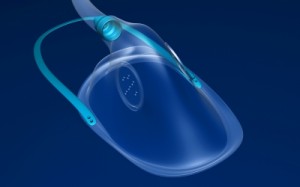How Halitosis is Diagnosed?
 Halitosis can be diagnosed by oneself (self diagnosis), but it is better diagnosed by a professional. There are some difficulties involved in diagnosis and accuracy of self diagnosis and it should be left to professionals.
Halitosis can be diagnosed by oneself (self diagnosis), but it is better diagnosed by a professional. There are some difficulties involved in diagnosis and accuracy of self diagnosis and it should be left to professionals.
Self diagnosis of halitosis:
Self diagnosis of bad breath may not be easy, because we are used to our own odor (acclimatized). There are several methods which can be used for self diagnosis of halitosis. One of the simple methods of self diagnosis is to ask close friend or family member (confidant). If your confidant confirms the diagnosis of it may also be possible to find out (by your confidant), whether bad breath originates in mouth or nose. Another method of self diagnosis of halitosis involves scraping of posterior part of tongue with a plastic spoon and to smell the remnants after drying. But accuracy of diagnosis is questionable. These days’ home tests are available which detect malodorous sulfur or polyamines. But multiple tests may be required because breath odor changes throughout the day. Furthermore, studies on home tests are not many to establish the usefulness of these tests.
Professional diagnosis of halitosis is generally done by professionals (usually dentists) in their clinics/laboratories. Some commonly used laboratory/clinical methods are by use of halimeter, beta-galactosidase test, gas chromatography and BANA test.
Halimeter for diagnosis of halitosis:
Halimeter is a portable device for detection of emission of sulfide (hydrogen sulfide) in exhaled air. Halimeter is an effective device in detecting halitosis. But it has some drawbacks such as it detects mainly hydrogen sulfide but can not detect other sulfides and other malodorous compounds, which may cause halitosis. Halimeter can also detect alcohol and alcohol should be avoided for at least 12 hours before using halimeter.
Beta-galactosidase test for diagnosis of halitosis:
Beta-galactosidase enzyme is present in saliva the level of which have close correlation with halitosis and determining the level can help in diagnosis of halitosis.
Gas chromatography for diagnosis of halitosis:
This is a portable machine for detecting three main volatile sulfur compounds (VSCs, hydrogen sulfide, dimethyl sulfide and methyl mercaptan), which are responsible for bad breath.
BANA test for diagnosis of halitosis:
This test detects enzyme levels in saliva that are raised in a patient with halitosis.
What is halitophobia?
This is an exaggerated concern about breath odor and approximately 25% of patients visiting dentists for halitosis suffer from halitophobia. These patients may have normal breath odor or a temporary and minor halitosis, but they are very worried about their breath odor and seek medical attention. This condition is also known as “delusional halitosis†and up to 1% of adult population may be suffering from halitophobia.
Image: FreeDigitalPhotos.net
Related posts:



0 Response to "How Halitosis is Diagnosed?"
Post a Comment